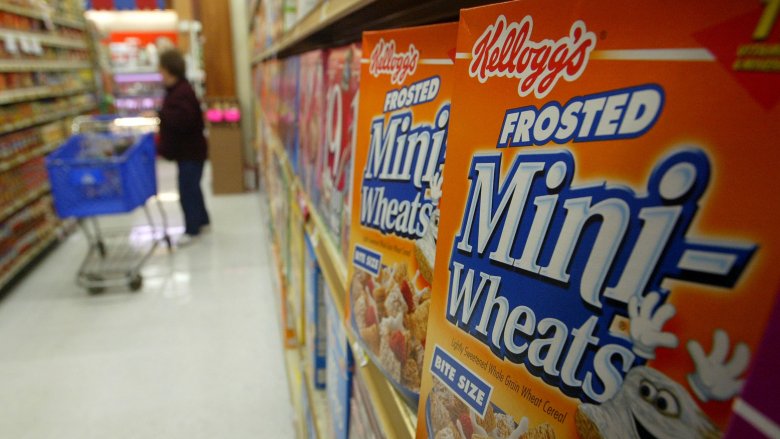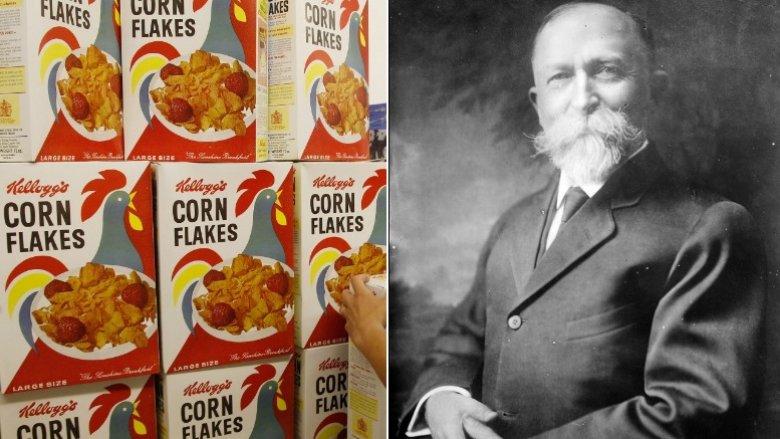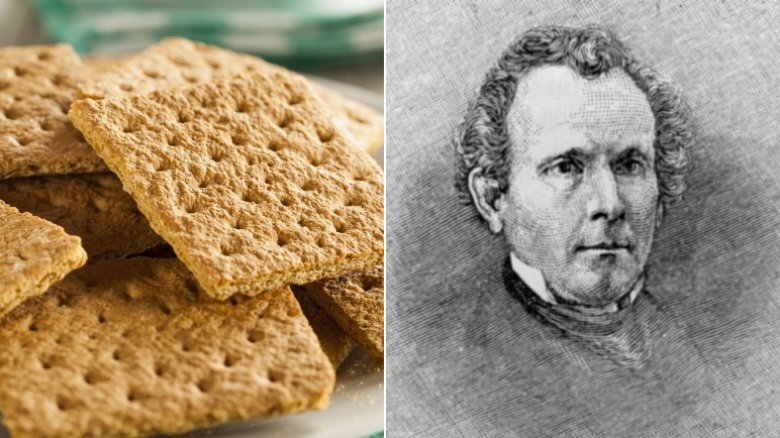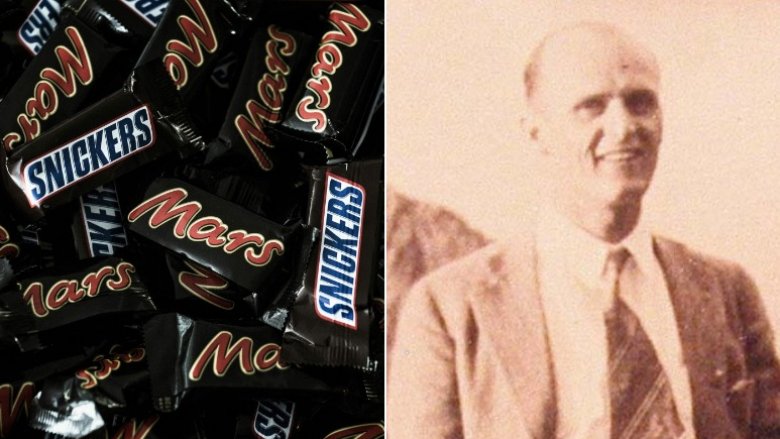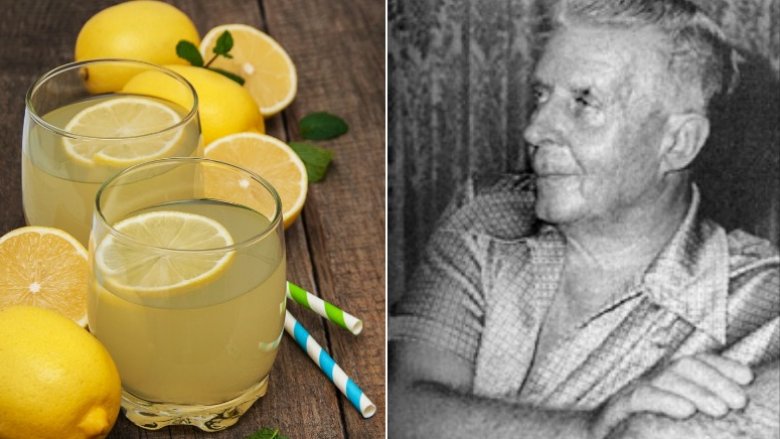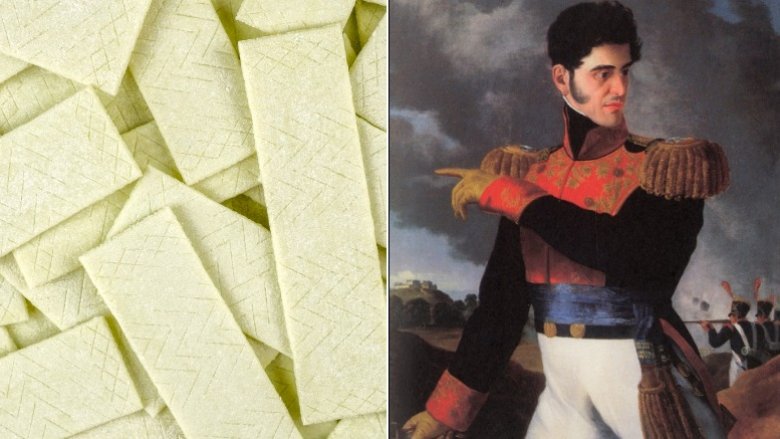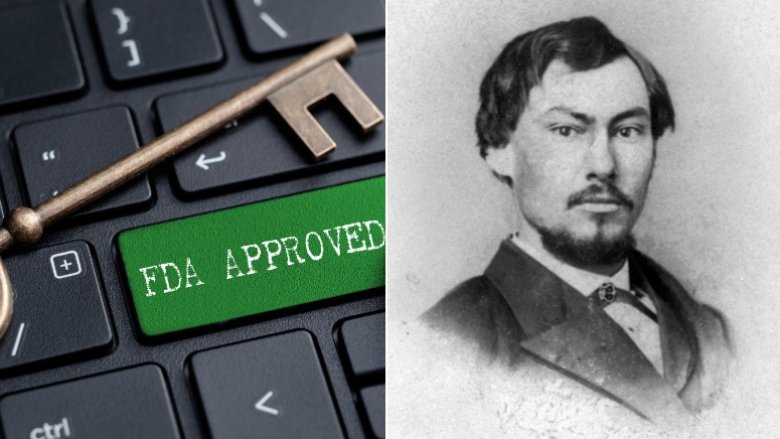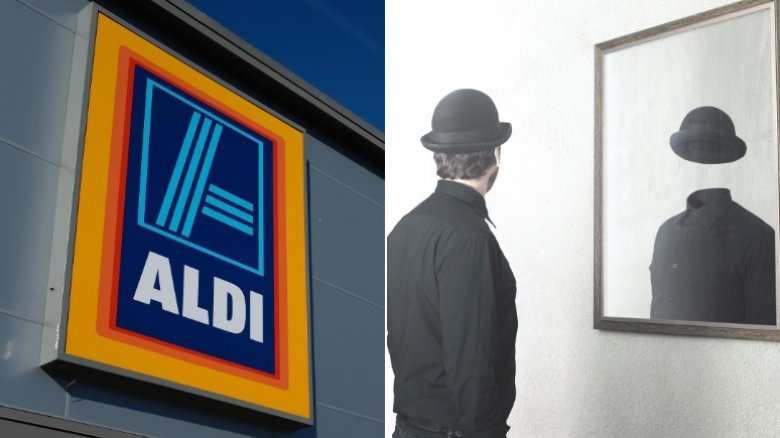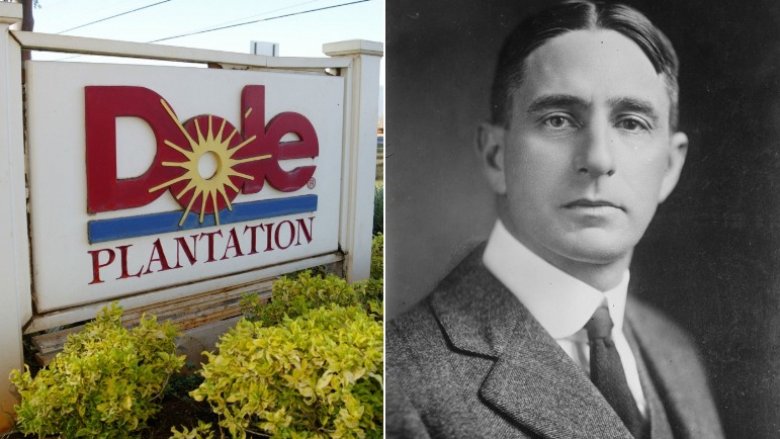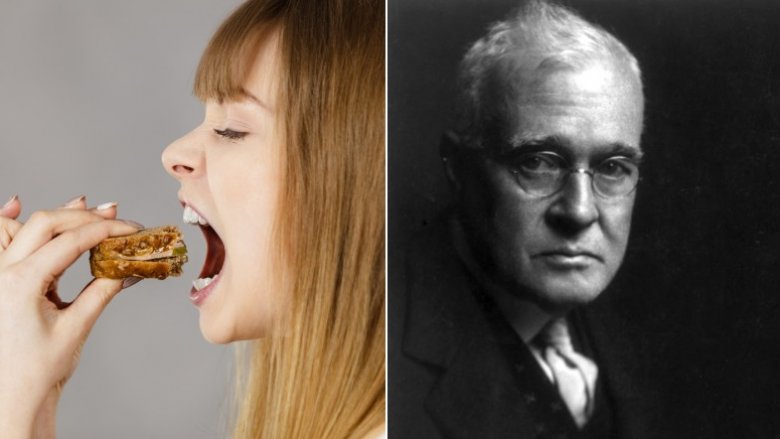Food Pioneers Who Were Really Strange People
Head to the grocery store, open the fridge, or peek in a kitchen cabinet and you'll find all kinds of familiar foods and brands. We see them on the shelves and in advertisements, and it's easy to take them for granted. But Kellogg's cereals weren't always an easy breakfast option, Mars candy bars weren't always a quick chocolate fix, and Aldi? As unthinkable as it is, that wasn't always around, either.
Food needed to be dreamed up from nothing and created out of nowhere, and imagine the visionary mind it took to say, "Hey, wait a minute... if we package fruit in cans, we can ship it anywhere. Anywhere!"
Sometimes, vision and imagination is a double-edged sword. It can lead to some strange beliefs and habits, so let's talk about the minds behind the brilliance that have shaped the way we eat today. You may be surprised to find that some of our favorite foods came from very strange people.
John Harvey Kellogg: Breakfast, served with a side of racism
At the start of the 20th century, there were a whole group of nutritionists looking at how to make our meals healthier. One man leading the change was John Harvey Kellogg. Working from the Battle Creek Sanitarium in Michigan, he experimented with foods, toasted some grain flakes, and revolutionized breakfast by inventing corn flakes and starting a line of cereals that's still immensely popular today.
But there was a dark side to Kellogg, too, one that Psychology Today says is particularly uncomfortable, even now. Kellogg believed that eating a flavor-filled diet led to too much physical enjoyment, and he was talking about sex. If you've ever wondered why corn flakes are so bland, that's by design. He not only wanted to create a bland diet he believed would encourage abstinence, but he also encouraged using painful metal devices and carbolic acid on children entering puberty, lest they have a sexual awakening of their own.
There's more. He was a huge supporter of segregation, and in 1906 he helped found the Race Betterment Foundation to promote separation of races and the superiority of white America. He didn't like anyone different from himself, and he wasn't afraid to say it.
Sylvester Graham: Curing sexual desire with crackers
Reverend Sylvester Graham gave his name to his invention, the graham cracker. He made future decades of camping trips that much better, and he had some decent ideas. According to Atlas Obscura, Graham's foodie crusade was built on the idea that even in the 1830s, so many people were eating poor quality food that someone, somewhere, needed to invent a healthy alternative. So, he did.
Noble, right? But Graham was extreme, and preached the only true and pure diet was to eat like Adam and Eve. That meant restricting your diet to foods that would have been found in the Garden of Eden and, of course, his graham crackers.
Alcohol and meat were forbidden, bathing was a must, and sex? Heck no. Graham believed that a clean and pure diet would lead to a clean and pure (i.e. sex-free) life. And that was important, because part of his spiel was that too much sexual desire would lead to things like lung hemorrhages, internal bleeding, and — this might sound familiar — blindness. People 100 percent believed him, largely thanks to the fact we had yet to understand how diseases worked. But hey, we still got s'mores!
The Mars men: Real-life Willy Wonkas
Everyone is familiar with the Mars candy company, but less familiar are the three men behind the company.
It started with Frank Mars, the son of a gristmill operator who failed time after time before his little, handmade candy company started breaking even, then turning a profit. When he started hiring, he set a precedent: great pay, but only for top-quality work (via Fortune).
Forrest Sr. (pictured) took over after a power grab following the deaths of his father and stepmother, returning from a sort of exile that started when Frank refused to give him stakes in the company — so he went off to Europe and started making his own candy. He followed in his father's footsteps in treating employees with extremes, but he was also a maniacal recluse who led the company in prayers for Snickers and Milky Way. When The Guardian reported on his death in 1999, they also said he had never spoken to media, refused to publicize the names of executives who worked for him, and required everyone — even execs and his own children — to punch time cards.
Forrest Jr. was next in line, keeping up with the anonymity. He was known to wear disguises to business meetings, never use his real name while traveling, avoid photos, and he even refused to address his own employees in a group setting.
Stanley Burroughs: Detox, hands-on healing, and Heaven's Gate
Detox diets are still all the rage, in spite of the controversy on whether they're amazing or dangerous. Stanley Burroughs was one of the biggest proponents of the most famous detox diet, the Master Cleanse. That's the one that involves drinking a mix of lemon juice, maple syrup, cayenne pepper, and water, and Healthline says that not only is there no proof it works, it might even hurt you.
It's questionable at best, and Burroughs himself may have been just as shady. A self-declared healer, he went on trial in 1984 after a client under his care died under circumstances some described as murder. The patient was suffering from terminal leukemia, and passed on more traditional care in favor of Burroughs and his treatment plan of lemonade, colored lights, and massage. Under Burroughs' counsel, he declined bone marrow transplants, agreed to eating nothing but lemonade, herbal tea, and salt water, and grew sicker and sicker before dying from an abdominal hemorrhage likely caused by abdominal massage.
Strangely, Burroughs also has a connection to the Heaven's Gate cult. According to Rolling Stone, cult members spent months at a time on the detox diet.
General Santa Anna: Wandering general and chewing gum promoter
Yes, we're talking about that General Santa Anna, the former leader of Mexico and self-styled Napoleon of the West (via History). He was installed as leader of the nation no less than 11 times, and he's also the reason chewing gum is a thing. He was in exile in Staten Island when he teamed up with an inventor, imported the rubbery chicle from Mexican sapodilla trees, and the rest is history.
But Santa Anna had his weird side, too, and it started when he took the to battlefield after a French pastry chef's accusation that the Mexican Army had destroyed his bakery escalated into all-out war. In the middle of a fight, Santa Anna took a cannonball to the ankle and his leg was amputated.
That would be the end of it for most people, but he insisted on a full military funeral for his leg. Mental Floss says it became a sort of symbol for him, and not only did he use it to remind people how much he sacrificed when he really wanted something, but that wasn't the only leg he lost. In 1847 — almost a decade later — he misplaced his fake leg and it was found by the 4th Illinois Infantry. They took it home, and the two countries are still arguing over who should have it.
Harvey Washington Wiley: When poison is on the menu
You might not know the name Harvey Washington Wiley, but you know the laws and organizations his work led to: the Pure Food and Drug Act, the Meat Inspection Act, and the FDA.
Wiley was working at the Agriculture Department in the early 20th century, and he was well aware that food regulations were sorely lacking. So, Wiley gathered a group of volunteers who would become known as The Poison Squad, and served up meals including popular food additives and poisons like borax, in order to study what happened when they ingested it. His work led to the creation of the regulations that keep us safe today, but it's not surprising he was a weird guy.
Esquire says squad members were all carefully vetted for their health and their willingness to die for the trials, but Wiley refused to admit women. A well-known misogynist, he claimed women weren't as smart as men, and said they were "savages" not capable of cooking and not fit to be poisoned. And his trials? They started with borax, served up with apple sauce, sweet potatoes, string beans, and everything else on the menu, earning him the nickname Old Borax.
Karl and Theo Albrecht: The thrifty billionaires
Karl and Theo Albrecht are the brothers that took over their parents' German grocery store and turned it into the international giant Aldi. They did it by honing in on what people really wanted: good food at a reasonable price. It turned them into two of the wealthiest people in the world, but until the days they died, they were notorious for their thriftiness and private natures.
Spiegel Online says Theo would use old envelopes even though they had an outdated address, tried to get a tax rebate for a ransom his family had paid to his kidnappers, and would be suspicious of executives who weren't using pencil stubs: they might be wasting supplies.
The brothers were both known for keeping the lights off to save on electricity, and when they bought cemetery plots for their families, they waited until trees and bushes went on sale at their own company before they had the plots landscaped. Karl built his own golf course and hotel to save on greens fees, and as reclusive as they were thrifty, they were rarely seen in public, never gave interviews, installed underground tunnels to avoid the public, and gave huge amounts to charity — as long as nondisclosure agreements went with the donations.
James Dole: Growing pineapples from Snob Hill
James Dole gave his name to the fruit company, and it started it with a piece of land in Hawaii and dreams of shipping pineapples all over the world (after his dream for doing the same with coffee failed). He left Massachusetts for Hawaii in 1899, developed methods for processing fruit before shipping it, and built an entire city to house the workers for his operations. According to The Hawaiian Journal of History, he had the best of intentions when he built Lanai City, with schools, playgrounds, a swimming pool, and all the modern conveniences employees could want.
If, that is, they happened to be white.
At the same time Dole boasted of his profit-sharing programs, he ran a city that was heavily segregated. Employees who were Asian or from Hawaii were given tiny houses without basics like water, electricity, or bathrooms. Other employees were given huge, detached houses in an area referred to as Snob Hill, and in spite of all his talk of incentives and benefits, he also kept an iron fist wrapped around everything that went on in his city. He even went as far as forbidding employees from growing their own vegetables, and all that is a very strange juxtaposition of kindness and cruelty.
Horace Fletcher: Chew, chew, and chew some more
If you've ever had someone tell you that you need to pay more attention to how well you chew your food, you can thank Horace Fletcher for raising chewing awareness. In the early 20th century, he popularized a fad diet called Fletcherism, and it involved chewing food so many times it completely turned to liquid in your mouth. He was thorough in his guidelines, too — Slate says that for example, a single shallot should be chewed 722 times.
That's weird, and that's not even the weirdest part about him. Fletcher had some impressive adherents, with people like Franz Kafka and Sir Arthur Conan Doyle promoting the diet. Senators tried to get Fletcherism added to school curriculums, and Herbert Hoover sent Fletcher to Belgium for war relief. At the same time, he preached about the way you could tell your diet was working: examining your poop. He wrote extensively on what the perfect poops were (round, dry, and scent-free), and he even saved some of the finest poop specimens that his adherents produced. Hopefully, not in his kitchen.
